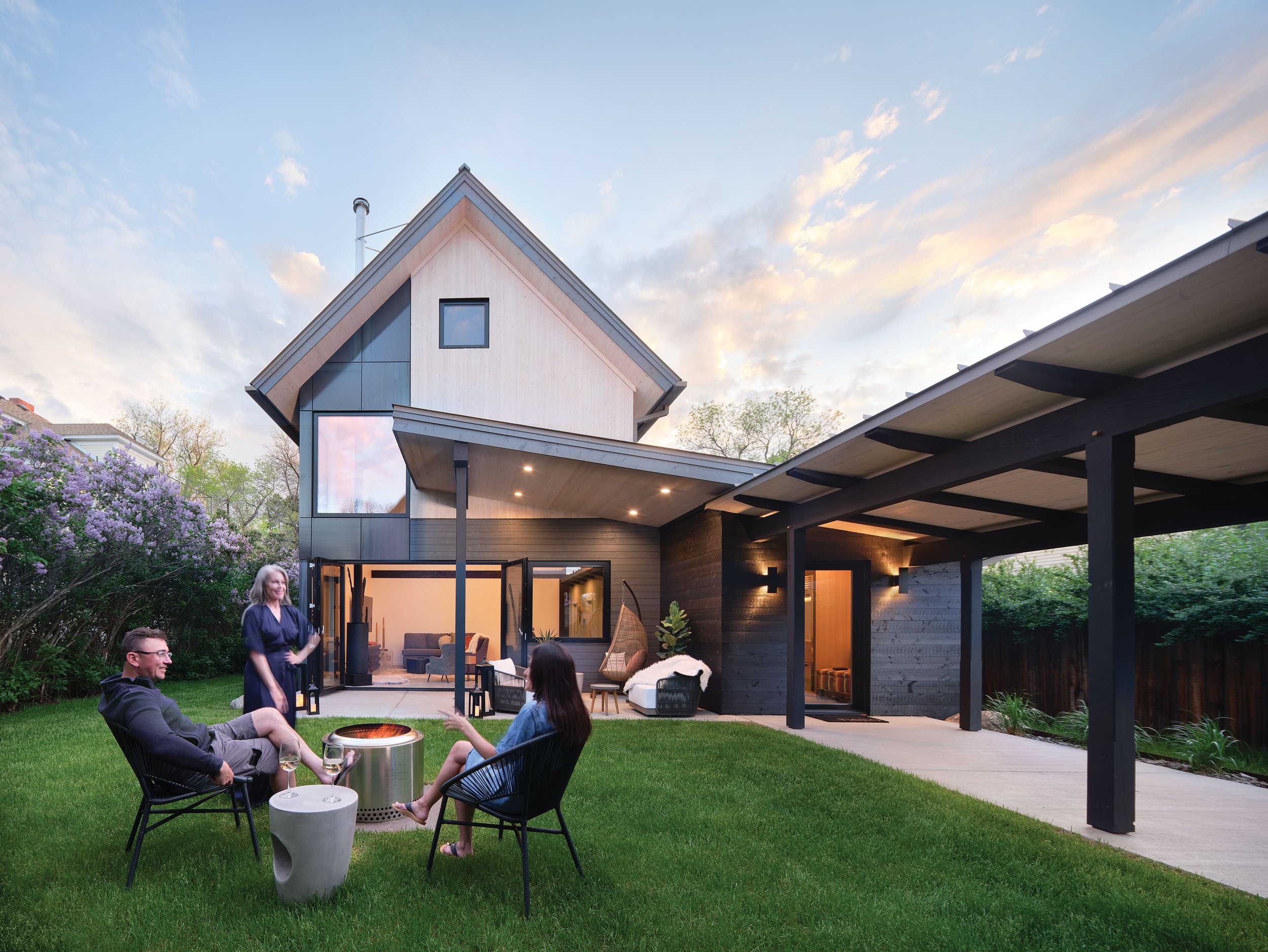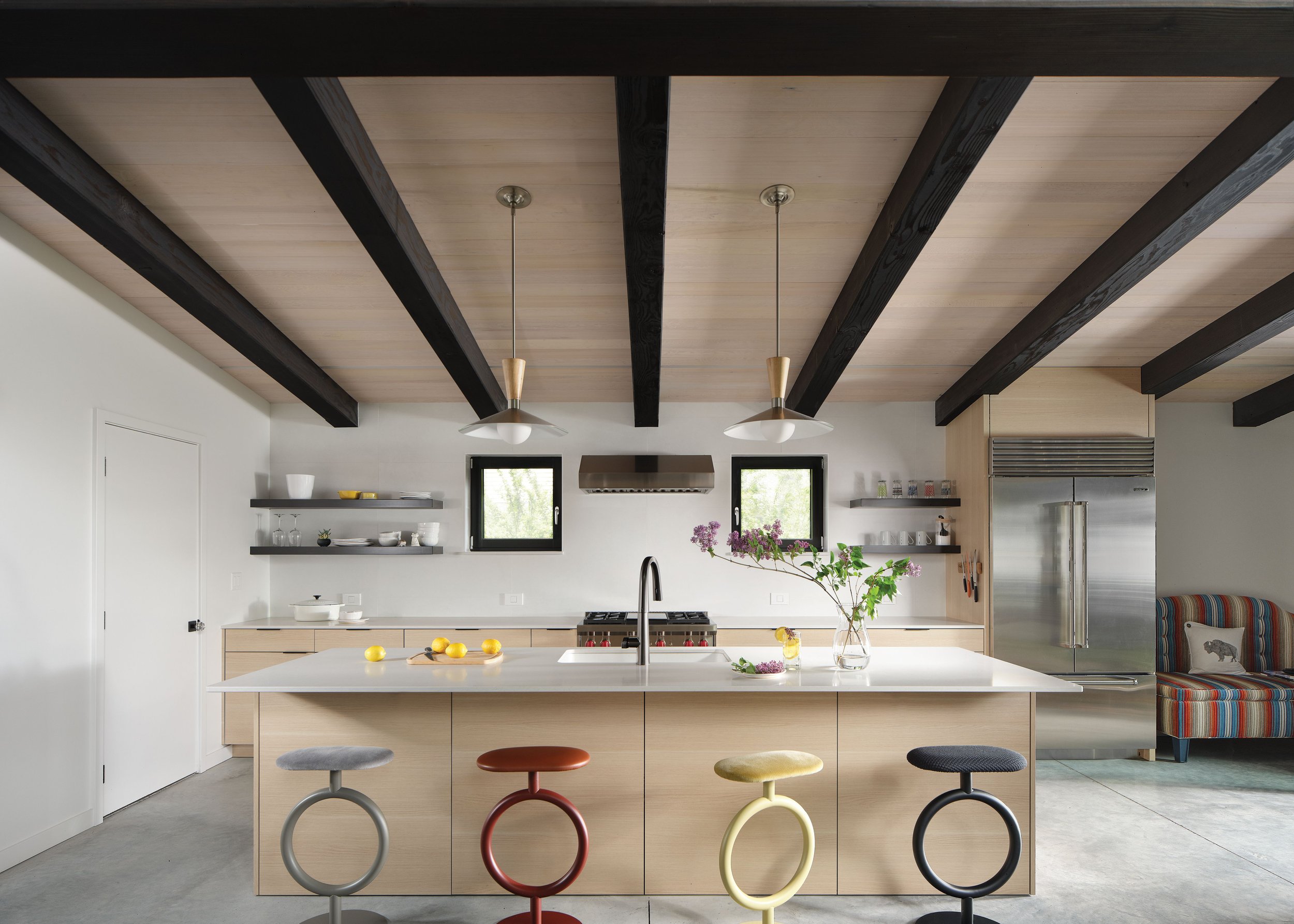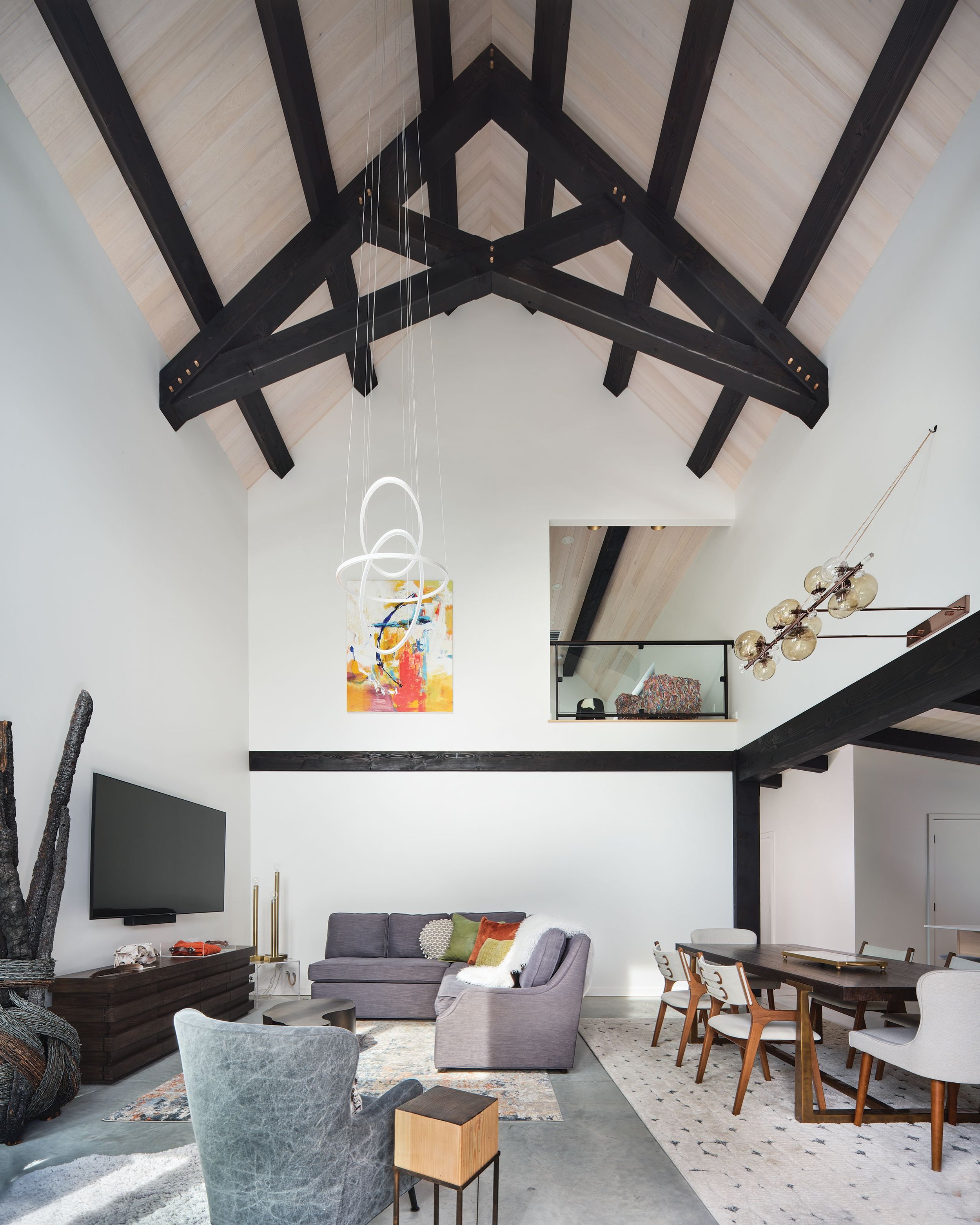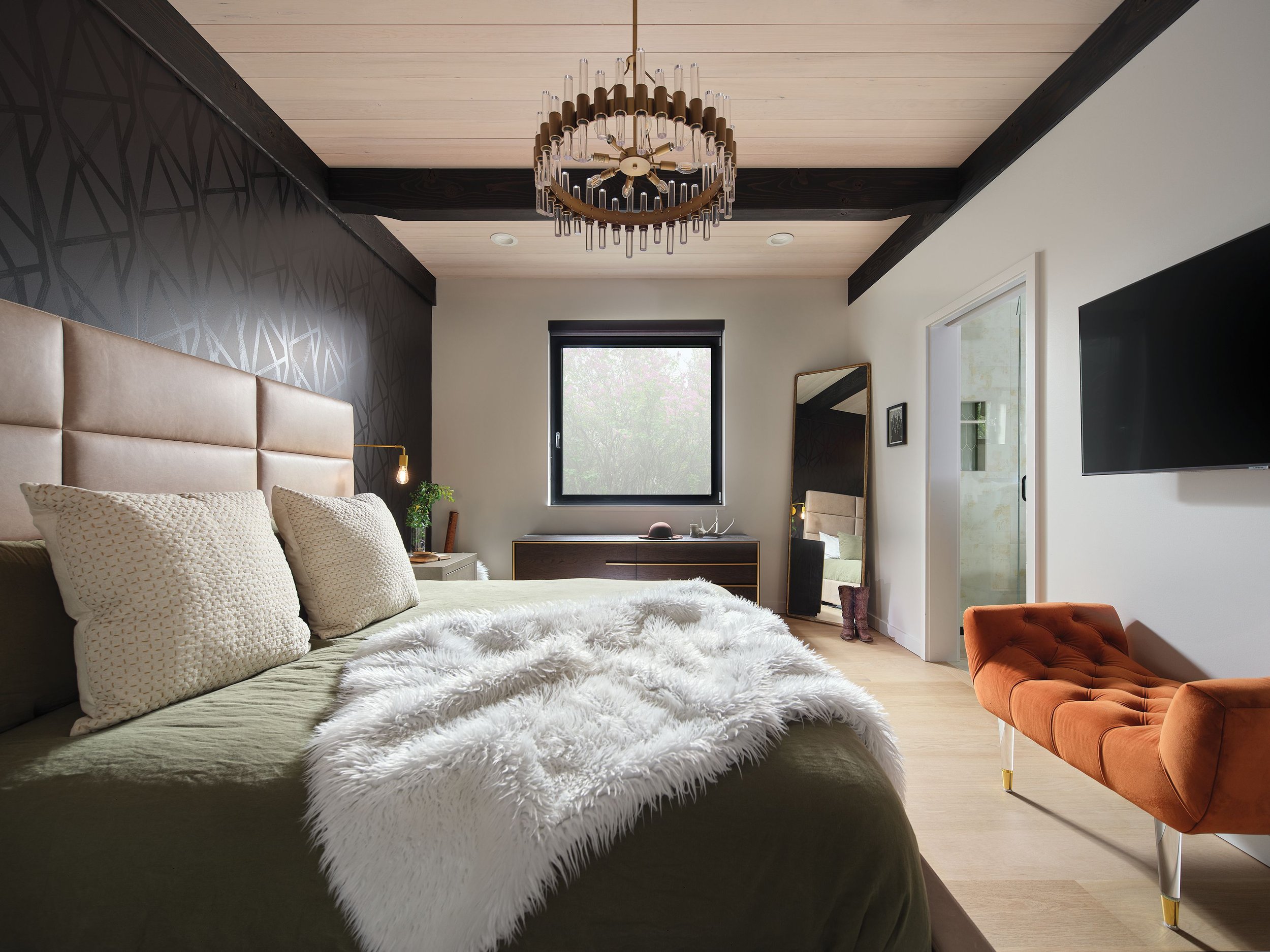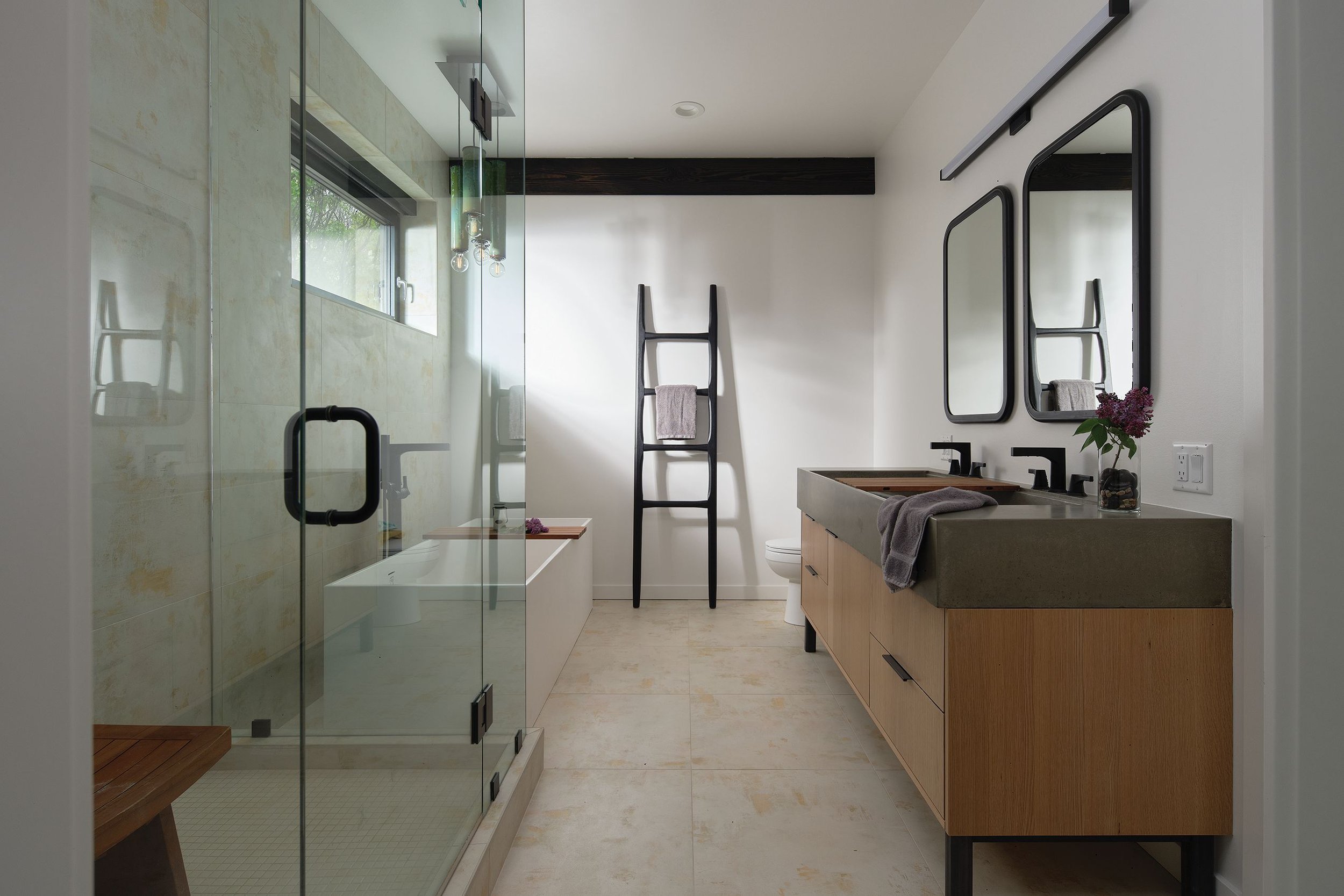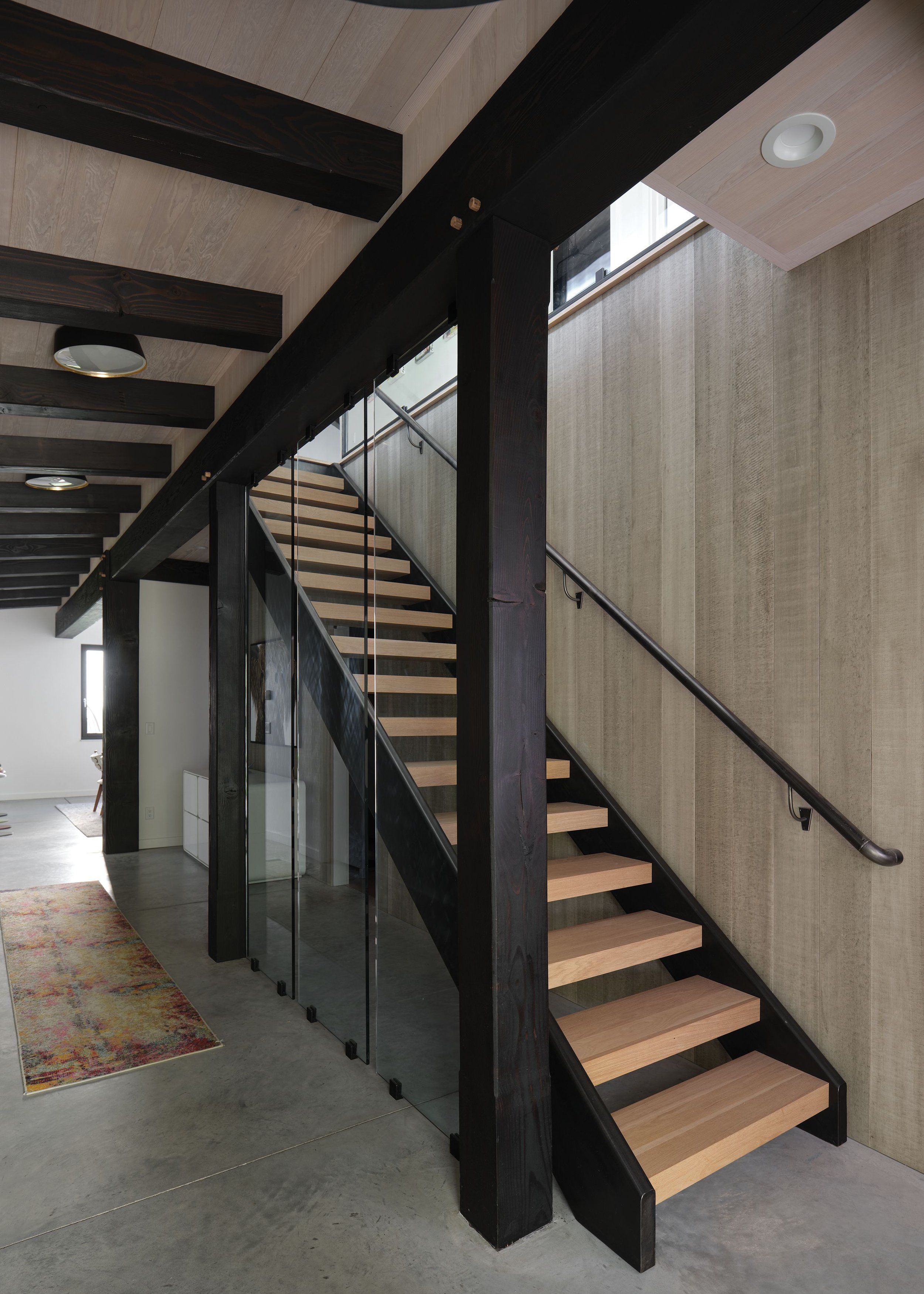Responsible Design
YOUR HOME IS YOUR HAVEN, A PRIVATE PLACE TO CALL YOUR OWN. IN OTHER WORDS IT’S ALL ABOUT YOU. OR IS IT?
Although we think in terms of “my house,” our abodes and environments are connected visually and ecologically to each other and to much larger spaces. Responsible design recognizes these connections and asks homeowners to hold themselves accountable for their home’s impact on the community and larger environment. Many people are finding this thought process leads to a higher-quality home and happier, healthier living. Let’s dive in.
Go Small. Live Large.
George Klemens, founder of Timberbuilt, has years of expertise with artisan homes. He always encourages his clients to shrink their floorplans because their thoughts often tangle needs and wants. Recalling a Timberbuilt home for a couple with a live-in, adult child, he recounts how they wanted a 10,000-square-foot home. Klemens talked them into downsizing to one under 5,000 square feet. It’s a masterpiece of artisanship and design, and the couple loved it, but ...
“I saw them 10 years later and they wished they had gone much smaller,” Klemens says. “They could afford anything they wanted and admitted getting caught up in all the extra amenities. Their ‘smaller’ home was still huge. People think they need all this space for kids, guests, rec rooms, and more. Then it sits empty for 49 to 50 weeks every year. There are so many costs associated with that.”
The costs Klemens describes go beyond monetary. Smaller homes consume fewer materials for construction, demand less energy, tend to blend into the landscape better, and represent a smaller carbon footprint. Rather than being a singular showpiece, they become authentic additions to the community. Klemens recommends starting as small as possible, then adding a windowed basement, a carriage house, or an accessory dwelling unit (ADU), if needed.
Self-Enrichment
Done well, homes that use fewer resources enrich lives. Timber frames such as those built by Klemens, are made with structural insulated panels (SIPs), which are some of the home industry’s most energy efficient enclosure systems. Their structure also adds volume for an interior that feels luxuriously spacious at a human scale.
“A SIP home has a reduced carbon footprint,” Klemens explains. “When combined with a smaller materials footprint, in essence, you’re accommodating others on this planet. You ought to feel good about that.” \
Conventional homes can also be built for better energy efficiency. Additionally, homeowners can research their desired materials selections to ensure they are ecologically sourced and not just “greenwashed.” For interiors, a professional designer can help you work with your current furnishings, shop for high-quality consignment pieces, or select strategic new items that will last for years.
Rethink Beauty
Outdoor living spaces expand a home’s sense of space while minimizing resource consumption. These spaces ask a different set of questions. “Excellent landscape design goes beyond aesthetics and how you feel,” says landscape designer and owner of Lydon Landscape Design, Connie Lydon. “It’s about reading the landscape and habitat viability.”
SOIL. “Soil is the key to making everything work,” Lydon says. “If it’s good, protect it. If it’s not good, enrich it. You are a steward for the soil microbes. Protect the microbes that enrich the soil, and preserve its structure by not working the garden when soil is wet.”
HARDSCAPING. Use reclaimed materials as much as possible. Lydon points out that every time a homeowner requests new, even with natural materials, those materials must be mined, produced, and transported. Materials and hardscaping should protect the watershed and keep rain runoff clean.
PLANTINGS. Lydon recommends anchoring plantings with what is already thriving — good shrubs or trees. For new beds, choose species that help pollinators and don’t demand lots of weeding, maintenance, or chemicals. Rethink lawns to be smaller or use rough-cut meadows. Clover helps lawn health and is not a weed. Mimic nature for gorgeous swaths of color by planting in large, expansive drifts. Incorporate edible plants to encourage more outdoor engagement, which can improve overall well-being.
TREES. Strategically planted trees keep a house cool during the summer. Make sure to protect existing trees’ roots during any type of construction to keep their roots healthy. Install fencing at canopy driplines to prevent soil compaction. Newly planted trees need a saucer mulch ring to capture rainwater and to protect new roots.
LIGHTING. Light pollution is a problem — disrupting animal migrations, burning unnecessary energy, and diminishing night sky views for miles around. Mitigate outdoor lighting by using shades and downlighting techniques. “Responsible design is your civic duty,” Klemens says. “Be helpful. Build a house that pays it forward and contributes to good.”


